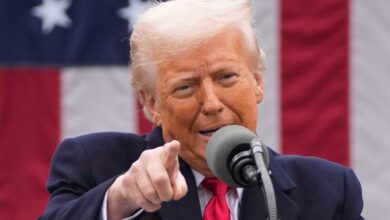Navigating the Ripple Effects: Understanding the U.S.-China Trade Relations and Their Global Economic Impacts

:
In recent years, the intricate dance of trade relations between the United States and China has become a pivotal axis around which much of the global economic climate revolves. As two of the world’s largest economies, their interactions not only shape their own economic health but also have far-reaching implications for the global market, influencing everything from stock prices to consumer goods availability in suburban America.
The Current State of U.S.-China Trade Relations
The relationship between the U.S. and China has been marked by a series of negotiations, tariffs, and trade agreements, each with its unique impact on the global economy. Currently, both nations are navigating a complex web of economic interdependence, with the U.S. seeking to balance its trade deficit while maintaining a steady flow of goods crucial for its consumer markets.
Impact on Global Markets
The ripples of this relationship are felt globally. For instance, changes in trade policies can significantly affect commodity prices, directly influencing the investment portfolios of suburban homeowners in the U.S. Furthermore, manufacturing costs and supply chains, heavily reliant on Chinese production, have seen shifts, affecting everything from the price of electronics to household goods.
Suburban America: A Microcosm of Global Effects
In suburban regions across major U.S. metropolitan areas, the effects of these trade dynamics are palpable. Homeowners and consumers face fluctuations in prices for imported goods, while local businesses, often reliant on global supply chains, must adapt to these changing tides. Moreover, the stock market, a critical component of many suburbanites’ retirement plans and investments, often reacts sensitively to developments in U.S.-China trade relations.
Looking Ahead: Challenges and Opportunities
As we look forward, the U.S.-China trade relationship continues to present both challenges and opportunities. For American businesses, adapting to these changes means finding innovative ways to diversify supply chains and exploring new markets. For the suburban investor and consumer, staying informed about these global dynamics is key to making savvy financial and purchasing decisions.
The U.S.-China trade relations are more than just a diplomatic dance; they are a fundamental part of the global economic fabric. Understanding their nuances is essential for anyone, from the suburban homeowner to the urban entrepreneur, as these relations shape the economic landscape of both today and tomorrow.





